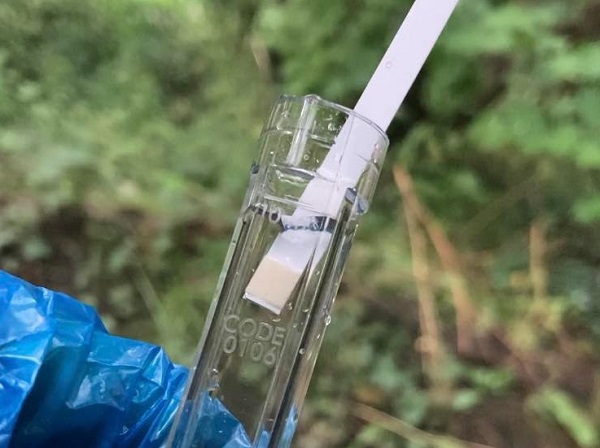HIGH levels of pollutants have been found in the River Frome.
Measurements of phosphate and nitrate nutrients were carried out by a team of 193 volunteer ‘citizen scientists’ for the Bristol Avon Rivers Trust as part of its RiverBlitz event.
They took sampling kits and monitored rivers across the Bristol Avon catchment, including the Frome and tributaries the Ham Brook, Ladden Brook and Folly Brook during a weekend in July.
The river conservation charity analysed the 293 samples, and its results show all of those collected in the Frampton Cotterell, Winterbourne Down and Hambrook area showed high levels of nitrates, and high or medium levels of phosphates, pollutants which can have harmful effects on wildlife.
Levels of both pollutants were high at The Dingle in Winterboure Down and next to the Frome Vally walkway in Hambrook. High levels of nitrates and medium levels of phosphates were found at Huckford Quarry, opposite Frome Bank Gardens, by the M4 bridge in Hambrook and in the Ladden Brook in Iron Acton.
Invasive plant giant hogweed and litter was also seen in the Frome Valley, which the river passes through on its way from Dodington to Bristol.

BART says pollutants can enter streams and rivers from a variety of sources, including pesticides and fertilisers washing off fields, livestock waste, sewage overflows and treated sewage discharges.
Higher levels of nitrates in upstream areas are likely to be linked to farming; phosphate levels – linked to sewage and urban run-off as well as agriculture – were higher downstream.
Survey is a ‘snapshot’ of pollution on one day
BART chief executive Simon Hunter said: “As this presents just a single snapshot of phosphate and nitrate data, it is challenging to single out the cause and source of the particular issue.
“However, what our citizen science data does show is that there is a problem regarding the levels of nutrients entering our watercourse at that given time – in the case of the 2023 Blitz, following a significant rainfall event following a very dry period in summer.
“The causes of high nutrient levels are likely to be as a result of water industry discharges as well as misconceptions from homes and possibly businesses, and impacts from agricultural land-use too.”
A map produced by the Rivers Trust nationally recorded 248 overflows into the Frome from Wessex Water storm drains at Harcombe Farm in Winterbourne, Sunny Acres Footbridge and Nightingales Bridge at Watley’s End, and Rectory Road, Clyde Road, Church Road and Bridge Way in Frampton Cotterell last year.

BART says 89% of sample locations across the region recorded high levels of nutrients, with only one out of 293 showing a low concentration: 83% of samples were high in nitrates and 42% high in phosphates, with levels of both higher than average over previous surveys.
Water company ‘committed’ to reducing sewer overflows
Wessex Water, which is responsible for the region’s waste water, recently featured in a BBC investigation into sewage releases into watercourses during dry weather last year.
A Wessex Water spokesperson said none of the sites in the BBC investigation were in the Frome Valley.
The spokesperson said: “Phosphates are the main pollutant in the Bristol Avon catchments. Wessex Water has already removed 100 tonnes of phosphate per year from water recycling centres and we’re spending a further £57 million to remove another 70 tonnes by 2025.
“The remaining phosphates largely come from agriculture and urban run-off, so we’re working with farmers and other landowners to reduce this through use of nature-based solutions.”
The company has 121 sewage treatment works, 714 pumping stations and 670 storm overflows within the River Avon catchment, which includes the Frome.
The spokesperson said Wessex Water had spent £15 million on the Frome Valley relief sewer scheme, completed in 2018, which “provides additional sewerage capacity for new and future development in the area and safeguards river quality”.
He added: “Although overflows are licensed by the Environment Agency to protect properties from flooding and discharge mostly rainwater, we’re committed to reducing how often they operate and are investing more than £3 million every month on schemes to improve them.”
A map showing where samples were taken can be found at bristolavonriverstrust.org/riverblitz.


